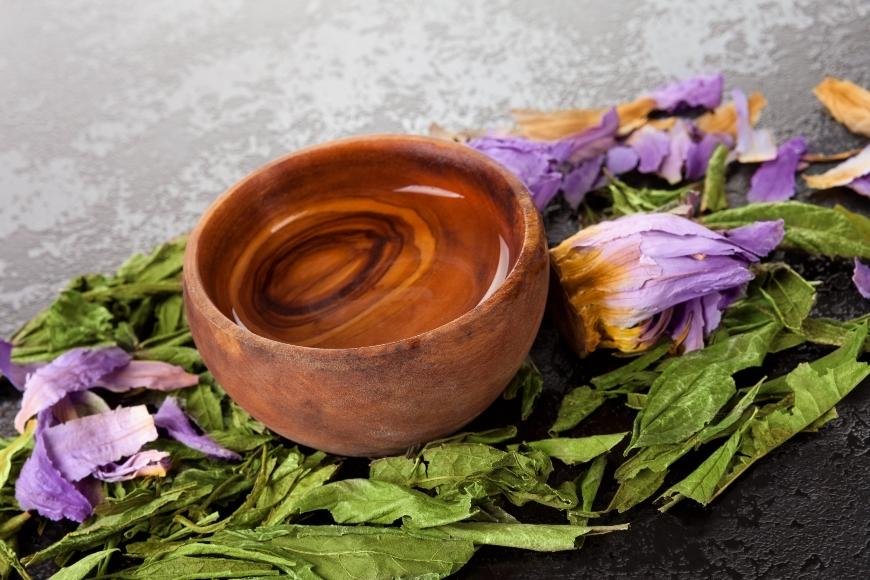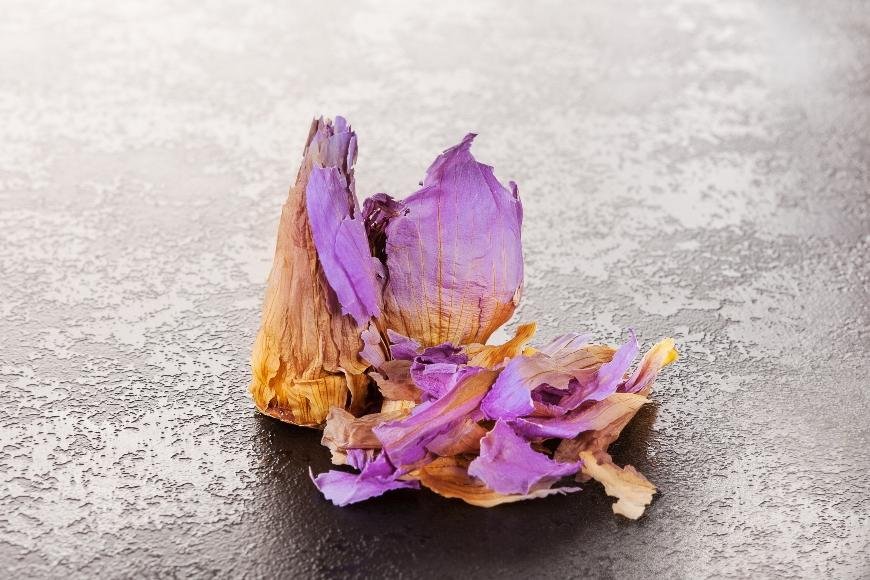How to Grow Blue Lotus
Learn how to grow blue lotus with our beginner's guide, covering location selection, planting, care, harvesting and storage of this beautiful flower.

Discovering how to grow Blue Lotus can be a rewarding experience for those who appreciate this beautiful and sacred flower. The majestic blue lotus, also known as the Egyptian blue lily or sacred flower of antiquity, has long been held in high esteem for its spiritual properties.
In this comprehensive guide on growing Blue Lotus, we will delve into every aspect of cultivating these enchanting plants. From choosing the perfect location to planting and caring for your water lilies, you'll gain valuable insights into nurturing these mystical blooms.
Furthermore, we will explore harvesting techniques that ensure maximum potency of the dried flowers while preserving their essence. Finally, learn proper storage methods to maintain the longevity and quality of your harvested Blue Lotus flower extract. Embark on this journey with us and master how to grow Blue Lotus in your own garden or pond oasis.
Table of Contents:
- Choosing a Location
- Planting and Caring for Blue Lotus
- Harvesting Blue Lotus
- Storing Blue Lotus
- FAQs in Relation to How to Grow Blue Lotus
- Conclusion
Choosing a Location
Growing Blue Lotus can be a rewarding experience, but it's important to choose the right location. A sunny spot is essential for Blue Lotus plants to thrive and produce flowers. The ideal location should get at least 6 hours of direct sunlight each day and have well-draining soil. If you don't have access to an outdoor space with these conditions, you may want to consider growing your Blue Lotus indoors in containers or raised beds.
When selecting an outdoor area for your Blue Lotus plants, make sure that there are no nearby trees or other structures that could cast shade on them during certain times of the day. Provide your plants with adequate space to thrive and bloom without being overcrowded. Additionally, avoid planting near sources of water such as ponds or streams since this can create too much moisture which can cause root rot in the plant’s roots over time.
Finally, pay attention to the temperature range where you plan on planting your Blue Lotus flowers; they prefer temperatures between 65°F (18°C) and 75°F (24°C). If possible, try not to expose them directly to strong winds which could damage their delicate petals and stems or cause them stress if temperatures drop below freezing point overnight during winter months when grown outdoors in cold climates.
Ensure that the site you select for your blue lotus is well-lit and has effective drainage. Now that you have chosen the right spot, let's move on to planting and caring for your blue lotus.
Planting and Caring for Blue Lotus

Planting Blue Lotus:
Planting blue lotus is relatively easy and requires minimal effort. For optimal results, plant blue lotus when the soil temperature is at least 60 degrees Fahrenheit in late spring or early summer. When planting, it's important to use well-draining soil that has plenty of organic matter such as compost or manure mixed in. Leave sufficient room between each flower to ensure adequate exposure to the sun. If you are planting multiple varieties, make sure they have enough distance between them so their roots don't cross-pollinate and create hybrid plants.
Watering:
Once planted, water your blue lotus regularly during its first growing season; about once a week should be sufficient for most climates unless there is an extended period without rain. Water deeply until the soil around the root zone is saturated with moisture; this will help encourage strong root growth which will support healthy foliage growth later on. During hot weather months, water more frequently but never allow standing water around the base of the plant - this can cause fungal issues like rot or mildew which could kill your flowers prematurely.
Fertilizing:
Fertilize your blue lotus every few weeks using a balanced fertilizer specifically designed for flowering plants; avoid overfertilizing as too much nitrogen can lead to weak stems and poor blooming results. A slow release fertilizer works great since it provides nutrients throughout its entire growing season without having to reapply often - just follow package instructions carefully. Additionally, adding some mulch around each plant helps retain moisture in dryer climates while also suppressing weeds from competing with your flowers for resources like light and nutrients from fertilizers applied directly into the soil near them (but not touching).
Pruning & Maintenance:
Pruning isn’t necessary for blue lotus, but if you want larger blooms then prune back any dead leaves or stems after flowering has finished. This will ensure new growth stays healthy by removing any diseased material before it spreads further through your garden beds. Additionally, remove any spent blossoms promptly after they wilt away so energy isn’t wasted on trying to revive them instead of producing new buds next year. This also prevents pests from taking up residence inside those old petals which could potentially harm other nearby plants too. Finally, keep an eye out for signs of disease such as yellowed leaves or wilting stems; if caught early these problems can usually be treated quickly before spreading further into surrounding foliage making pruning even more important than ever before.
By following the simple steps outlined in this article, you can successfully plant and care for your Blue Lotus. Now let's move on to harvesting it for optimal results.
Harvesting Blue Lotus
Harvesting Blue Lotus is an important step in the process of cultivating this ancient plant. The optimal time to harvest your Blue Lotus will depend on the climate and season you are growing in, but generally, harvesting should occur when the flowers have opened and begun to droop slightly. If left too long, the flowers may become overly ripe and thus lessen their strength.
For best results, it’s recommended that you harvest your Blue Lotus by hand instead of using a tool like scissors or shears. This will help ensure that all parts of the plant are harvested properly without damaging them or leaving behind any valuable material. Start at the base of each flower stem and carefully remove each individual bloom with its accompanying leaves attached. You can also collect any unopened buds as these contain many beneficial compounds such as alkaloids which can be used for medicinal purposes later on down the line.
Mid-morning is the optimal time to pinch off leaves from Blue Lotus plants for future use, such as making tea. This helps ensure that their essential oils are preserved better than if they were collected later in the day after being exposed to sunlight for several hours. It's important to be careful not to damage them as they are delicate and easily damaged when handled roughly or cut off with a tool like scissors or shears.
Once all desired materials have been collected from your crop of Blue Lotus plants, store them away in airtight containers out of direct sunlight until ready for use either fresh or dried depending upon what type product you plan on creating with them afterwards (e.g., tinctures). Proper storage techniques can help prolong shelf life significantly while preserving most beneficial properties intact throughout processing stages ahead.
Harvesting Blue Lotus requires a delicate hand and an eye for detail, as the flowers are extremely fragile. Storing them properly is essential to preserve their quality and ensure that they remain potent over time.
Storing Blue Lotus

When it comes to storing Blue Lotus, there are a few options available. Before attempting any of the storage methods, it is essential to ensure that the Blue Lotus material has been thoroughly dried. Hanging the blossoms and foliage in a dim, cool spot for multiple days or weeks until they become fragile and powdery is one way to dry them. If you want to speed up this process, you can use an oven set at its lowest temperature setting with the door slightly open.
Freezing is another option if you want to store your harvested Blue Lotus for longer periods of time. Wrap the flower heads in plastic or place them in a sealed container, then put it into the freezer to keep their potency and retain color/scent. This will help keep their potency intact while also preserving their color and aroma.
Preserving Blue Lotus in oil or alcohol is also possible but should only be attempted by experienced growers who know how to properly handle such substances safely and responsibly. To preserve your harvested lotus flowers in oil, simply submerge them into warm olive oil until they’re fully covered then seal tightly with a lid before storing away from direct sunlight or heat sources like stoves or radiators. For preservation using alcohol, submerge the flower heads into vodka or brandy for two weeks before straining out the liquid and discarding it along with any remaining plant matter left behind after drying thoroughly on paper towels first if necessary .
It is worth noting that when stored correctly under optimal conditions, all three of these methods should help keep your harvest fresh tasting and potent over long periods of time without degrading too much over time. Taste testing periodically throughout storage may still be required depending on what type of product you plan on making with it afterwards.
FAQs in Relation to How to Grow Blue Lotus
How do you grow blue lotus?
Growing blue lotus requires patience and the right environment. Begin by immersing the seeds in warm H2O for 12 to 24 hours before positioning them into a soggy soil or potting mix-filled container. Place the containers in an area that receives plenty of sunlight, such as a windowsill, balcony or greenhouse. Water regularly but do not over-water; it is important to keep the soil slightly damp at all times. With proper care, you can expect your blue lotus plants to flower within 8-12 weeks.
How do you grow a lotus step by step?
1. Start by selecting a lotus plant that is healthy and well-suited to your climate. Make sure the soil you will be planting in has good drainage, as lotuses prefer moist but not soggy conditions.
2. Place the tuber into 4 inches of water with an inch or two of mud at the bottom for stability and nutrition; make sure it's in full sun or partial shade depending on what type of lotus you have chosen.
3. As the shoots start to grow, gradually increase the depth of water until there are 8-10 inches over them when fully grown; keep checking regularly for any pests which may damage your plants' leaves or stems.
4. When temperatures reach above 60 degrees Fahrenheit (15 Celsius), fertilize every 2 weeks using slow release fertilizer pellets designed specifically for aquatic plants such as lotuses - this will help promote strong root growth and flower production throughout their life cycle. 5. Ensure the water is uncluttered and uncontaminated, as lotuses can be vulnerable to contaminants in their habitat; also inspect for any signs of illness or bugs that could have an effect on your plants' wellbeing.
Conclusion
Growing blue lotus is a rewarding experience that can provide many benefits. Providing the necessary attention and maintenance, you can have glorious blossoms of this remarkable plant in your garden for a long time. By following the proper steps for planting, caring for, harvesting and storing blue lotus plants, you can enjoy their beauty while taking advantage of all its benefits. So go ahead - get started on growing blue lotus today.






































































































































